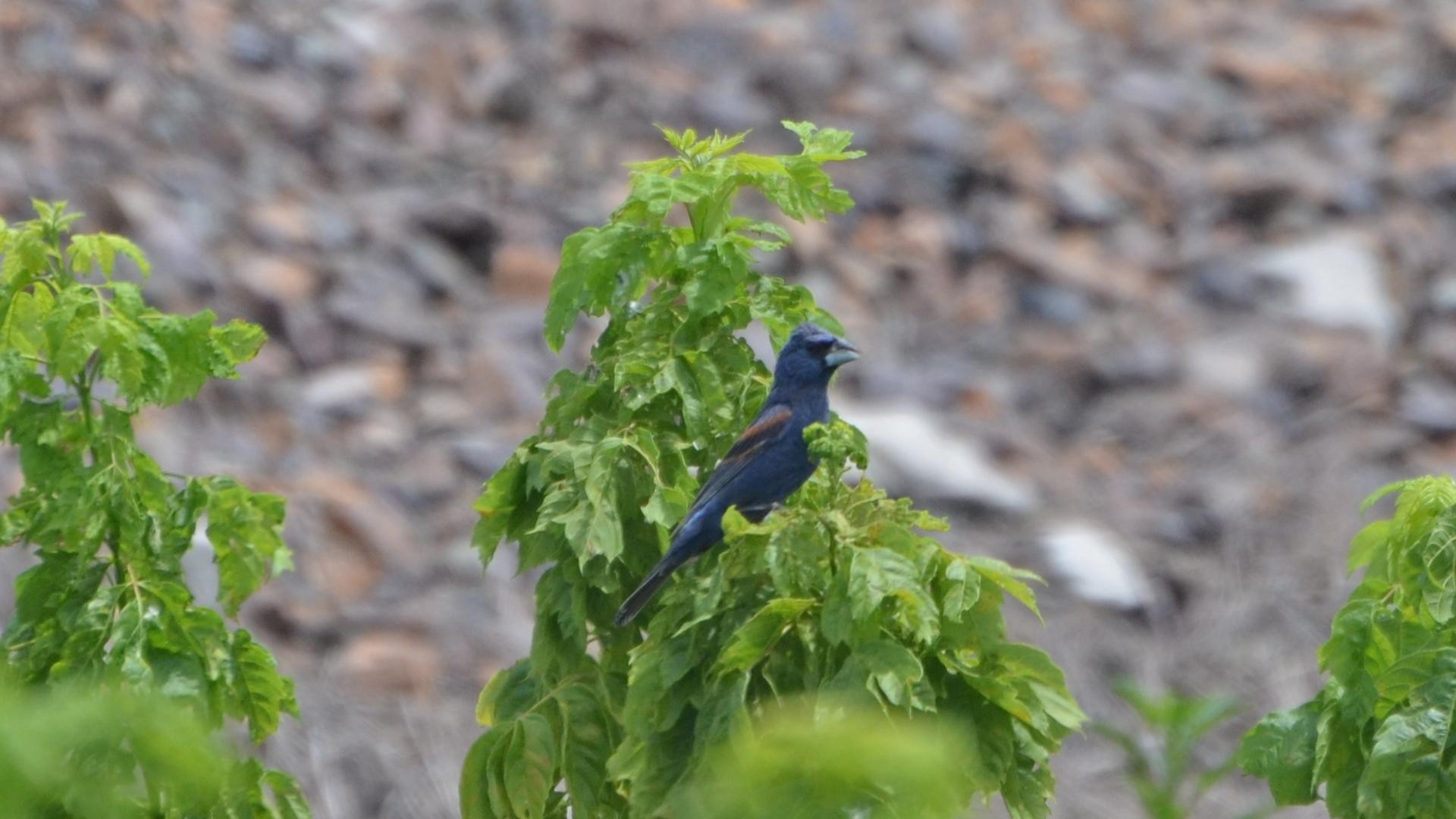Blue Grosbeak
A species of North american buntings Scientific name : Passerina caerulea Genus : North american buntings
Blue Grosbeak, A species of North american buntings
Botanical name: Passerina caerulea
Genus: North american buntings
Content
Description People often ask General Info
 Photo By Andy Reago & Chrissy McClarren , used under CC-BY-2.0 /Cropped and compressed from original
Photo By Andy Reago & Chrissy McClarren , used under CC-BY-2.0 /Cropped and compressed from original Description
The Azurbischof (Passerina caerulea, Syn: Guiraca caerulea), also called Pale Blue Bishop, is an American bird species from the family of Cardinals (Cardinalidae).
Size
16-19 cm (6.25-7.5 in)
Life Expectancy
6 years
Nest Placement
Shrub
Clutch Size
3 - 5 eggs
Incubation Period
1 - 2 broods
Number of Broods
12 - 13 days
Nestling Period
9 - 10 days
Feeding Habits
Blue Grosbeak primarily consumes insects, predominantly grasshoppers and crickets, but also beetles, cicadas, and caterpillars. They complement their diet with seeds from grains like wheat, oats, and corn. They display varied foraging behaviors, including hovering, gleaning, sallying from perches, and ground hunting, often decapitating and dismembering insects before feeding them to their nestlings.
Habitat
The blue Grosbeak thrives in semi-open terrains such as riparian woodlands, shrublands, and agricultural regions across southern North America to Central America. These birds seek habitats with scattered shrubs and minimal tree canopy, preferring nesting sites within low trees and bushes, typically 1-3 meters high. Their range extends into varied ecosystems including deserts and mesquite savannas, and during winter, they migrate to shrubby zones reaching central Panama.
Nest Behavior
The female blue Grosbeak primarily constructs the nest, with occasional male involvement. Nest building coincides with the breeding season. Blue Grosbeak lay their eggs within these nests and engage in parental care for their young.
Nest Characteristics
Blue Grosbeak typically build their nests low in vegetation such as small trees, shrubs, or vines, often near open spaces. The nest is a compact, cup-shaped structure made from diverse materials like twigs, bark, cotton, rag, and even snakeskin, measuring 2-3 inches across and 2 inches deep.
Dite type
Insectivorous
People often ask
General Info
Feeding Habits
Bird food type
Bird Feeder Type

Platform

Small Hopper
Sounds
Call
Recording location: Mexico
Behavior
Blue Grosbeak engage in distinctive behaviors throughout the year. On arrival at breeding grounds, males form flocks which precede the females; these birds exhibit a strong territorial instinct, staunchly defending up to 20 acres during early nesting. As nestlings hatch, territorial bounds contract. It's speculated that blue Grosbeak are monogamous, often raising dual broods within a season. Notably, these birds face heavy parasitism as cowbirds exploit their nests. Post-breeding, blue Grosbeak unify in large foraging flocks across various open landscapes, eventually grouping to migrate.
Species Status
Not globally threatened.

 Photo By Andy Reago & Chrissy McClarren , used under CC-BY-2.0 /Cropped and compressed from original
Photo By Andy Reago & Chrissy McClarren , used under CC-BY-2.0 /Cropped and compressed from original Scientific Classification
Phylum
Chordates Class
Birds Order
Perching birds Family
Cardinals Genus
North american buntings Species
Blue Grosbeak